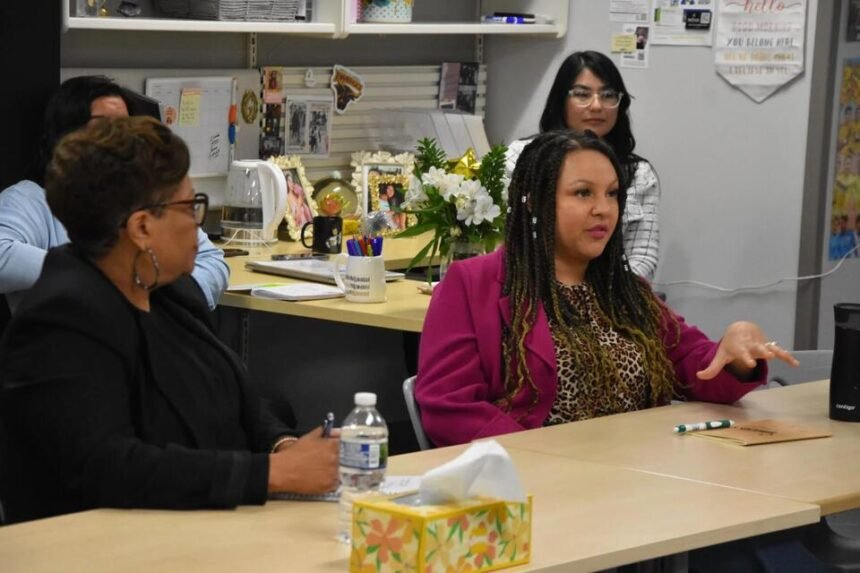When Ashley Oolman learned of St. Peter High School’s Joy Days dedicated to celebrating the cultural traditions of minority students, the Chief Equity Officer of the Governor’s Office of Equity, Opportunity and Accessibility said she made it a top priority to visit the school in person.
That’s exactly what happened on Friday morning, when Oolman sat down with school officials, the district’s Office of Education Equity and members of the student-led Social Justice Club to discuss the school’s efforts towards embracing student equity.
St. Peter Public School’s Director of Education Equity John Warren, founder of the Joy Day programs, told Oolman the full day cultural celebrations were inspired by an educational conference in Birmingham, Alabama which shifted his perspective on how to teach students about diverse groups.
“Joy just hit me like a ton of bricks. Where we often try to talk about our ethnic groups either historically or as victims, and we need to celebrate their humanity as we stand together and say to each other it’s so beautiful,” said Warren. “The beauty is breathtaking and that’s what we bring out.”
What started out as a half-day experience when Warren piloted the inaugural Indigenous Peoples Joy Day in November, 2023 evolved into a program that full-day experience would take over the whole school in February, 2024’s Black Peoples Joy Day as the social studies teacher realized that a half-day wasn’t enough. The event saw guest instructors come in to teach students about topics ranging from African American spirituals to Black entrepreneurship, a lunch featuring Somali cuisine prepared by local parents, live demonstrations of African dance and music and the staging of a scene from playwright Rose McGee’s “Kumbaya, The Juneteenth Story.”
In October, last year, the school district held a similar celebration of Hispanic and Latino culture featuring lucha libre wrestling, a live Latin rock concert performed by Alto Designo and a wide array of guest lecturers. Warren is now in the process of another Joy Day celebrating people with disabilities or are nuerodivergent (a term for people with autism, ADHD, dyslexia and conditions which impact brain function).
Students in the Social Justice Club, who have played a key role in helping plan and lead each Joy Day, told Oolman they felt it opened up more opportunities for their peers to express genuine curiosity about their cultures. Hamdi Garad, who painted her classmates faces during Black Peoples Joy Day, recalled seeing a lot more enthusiasm that she initially expected.
“I got a bit emotional with how much your peers were willing to learn from you. You just felt very seen and put out there,” said Garad. “It was like they didn’t see you for your skin color, they saw you for you.”
Christina Ralios recalled also feeling nervous over how her classmates would react when she decided to model a Guatemalan dress for Hispanic Peoples Joy Day, but was gladdened to see how her cultural traditions were embraced by the student body.
Wearing that dress in this middle school, I could never,” said Ralios. “But here a lot of people loved it and I was truly happy. When the day came, I was nervous, but then at the end, you had people dancing, and during the wrestling, everybody was yelling out.”
Oolman offered praise to school and to the students for having the courage to embrace their culture in an outspoken way when many adults often struggle with the dilemma of going with the crowd over being true to themselves.
“Y’all are doing things grown adults still struggle with and that was by design — erasure and not bringing yourself and putting on a blazer if you’re having a professional — that’s all created social norms so what a beautiful thing to be stepping into your power and your identity, which is not an easy age,” said Oolman.
During the conversation, Oolman also question the group about what issues mattered most to them to inform the Governor’s Office on community priorities.
One staff member pointed out issues with affordable housing, noting that the St. Peter Shcool District has lost many working, large families who want to be part od the district but have been priced out of living in the community.











